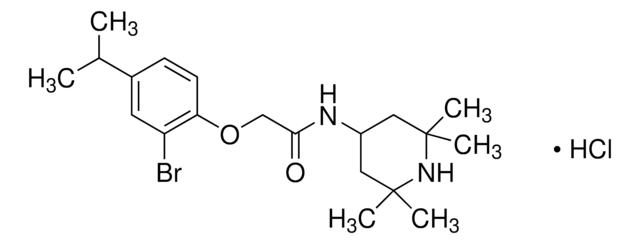SML3379
D159687
≥98% (HPLC)
别名:
1-(4-((3′-Chloro-6-methoxy-[1,1′-biphenyl]-3-yl)methyl)phenyl)urea, D 159687, N-[4-[(3′-Chloro-6-methoxy[1,1′-biphenyl]-3-yl)methyl]phenyl]urea, [4-(3′-Chloro-6-methoxy-biphenyl-3-ylmethyl)phenyl]urea, [4-[[3-(3-Chlorophenyl)-4-methoxyphenyl]methyl]phenyl]urea
登录查看公司和协议定价
所有图片(1)
About This Item
推荐产品
品質等級
化驗
≥98% (HPLC)
形狀
powder
顏色
white to beige
溶解度
DMSO: 2 mg/mL, clear (Warmed)
儲存溫度
2-8°C
InChI
1S/C21H19ClN2O2/c1-26-20-10-7-15(12-19(20)16-3-2-4-17(22)13-16)11-14-5-8-18(9-6-14)24-21(23)25/h2-10,12-13H,11H2,1H3,(H3,23,24,25)
InChI 密鑰
RJJLUTWHJUDZFP-UHFFFAOYSA-N
生化/生理作用
D159687 is a brain-penetrant, orally available, highly potent and selective negative allosteric modulator (NAM) against phosphodiesterase 4 (PDE4) subtype PDE4D (hPDE4D7 IC50 = 27 nM; PDE4A1/B1/C1 IC50 = 2.50/1.47/6.80 μM; IC50 ≥29 μM against PDE1/2/3/5/7/8/9/10/11 subtypes). Comparing to Rolipram, D159678 offers similar in vivo efficacy on long-term memory formation by novel object recognition test (MED = 3 μg/kg mouse iv., 1 μg/kg rat p.o.), while being more effective in the scopolamine-impaired Y-maze tests (D159678/Rolipram MED = 0.1/1 μg/kg mouse iv. or 30/100 μg/kg mouse p.o.) and much less emetic in shrews/dog/monkeys (by 100-/3000-/500-fold).
儲存類別代碼
11 - Combustible Solids
水污染物質分類(WGK)
WGK 3
閃點(°F)
Not applicable
閃點(°C)
Not applicable
Alex B Burgin et al.
Nature biotechnology, 28(1), 63-70 (2009-12-29)
Phosphodiesterase 4 (PDE4), the primary cAMP-hydrolyzing enzyme in cells, is a promising drug target for a wide range of conditions. Here we present seven co-crystal structures of PDE4 and bound inhibitors that show the regulatory domain closed across the active
David J Titus et al.
Neurobiology of learning and memory, 148, 38-49 (2018-01-03)
Traumatic brain injury (TBI) significantly decreases cyclic AMP (cAMP) signaling which produces long-term synaptic plasticity deficits and chronic learning and memory impairments. Phosphodiesterase 4 (PDE4) is a major family of cAMP hydrolyzing enzymes in the brain and of the four
Jane S Sutcliffe et al.
PloS one, 9(7), e102449-e102449 (2014-07-23)
Cyclic adenosine monophosphate (cAMP) signalling plays an important role in synaptic plasticity and information processing in the hippocampal and basal ganglia systems. The augmentation of cAMP signalling through the selective inhibition of phosphodiesterases represents a viable strategy to treat disorders
Chong Zhang et al.
Scientific reports, 7, 40115-40115 (2017-01-06)
Inhibition of cyclic AMP (cAMP)-specific phosphodiesterase 4 (PDE4) has been proposed as a potential treatment for a series of neuropsychological conditions such as depression, anxiety and memory loss. However, the specific involvement of each of the PDE4 subtypes (PDE4A, 4B
我们的科学家团队拥有各种研究领域经验,包括生命科学、材料科学、化学合成、色谱、分析及许多其他领域.
联系技术服务部门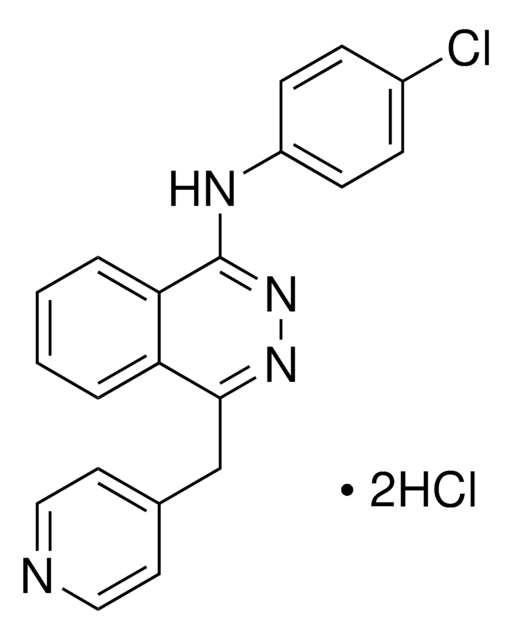



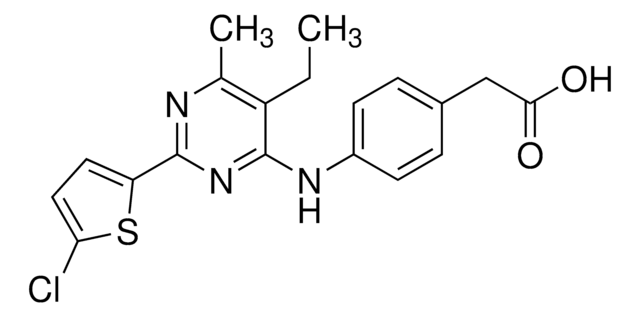
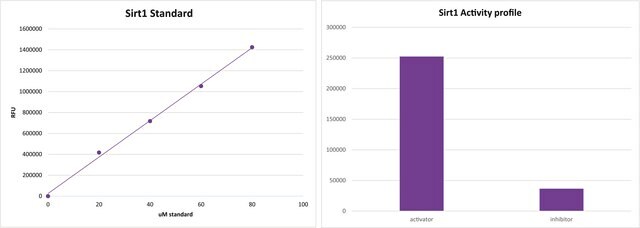
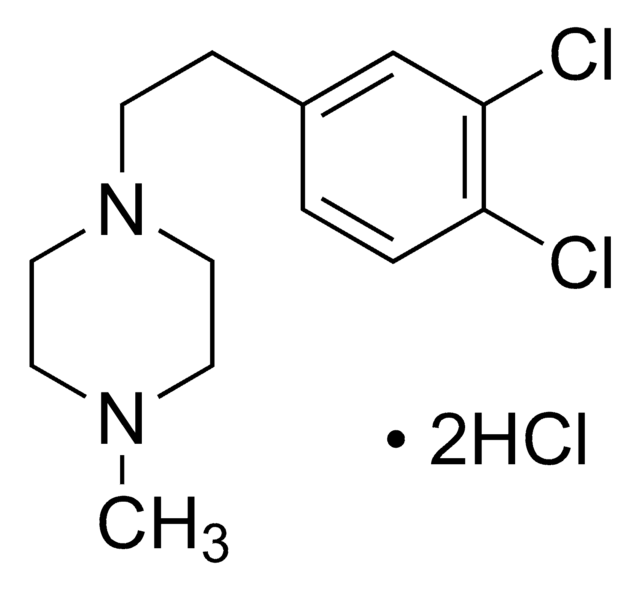

![1H-[1,2,4]恶二唑并[4,3-a]喹恶啉-1-酮 powder](/deepweb/assets/sigmaaldrich/product/structures/764/715/605dc5a5-0864-471b-a71e-bd2aa6553c1d/640/605dc5a5-0864-471b-a71e-bd2aa6553c1d.png)
